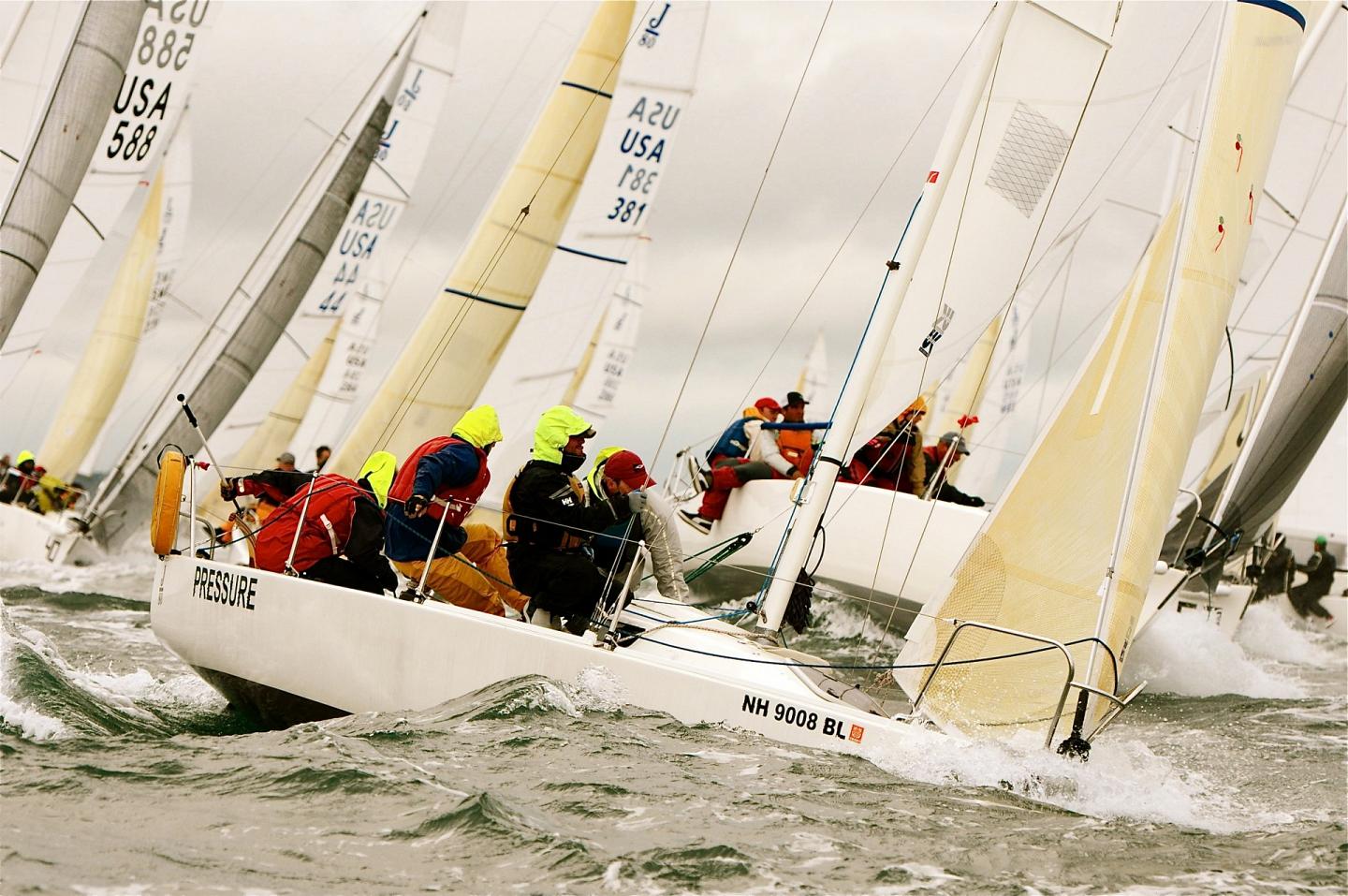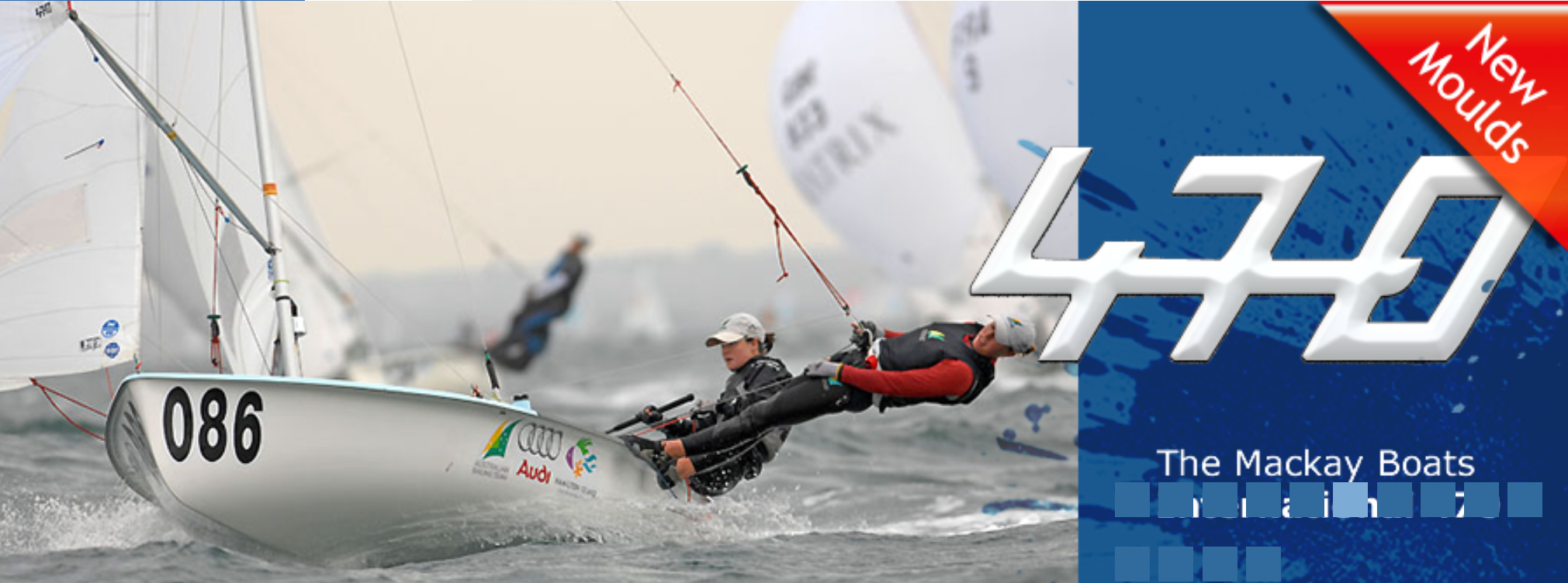By Airwaves writer Andrew Kerr
This article takes a look at the important elements of rounding the windward mark and offset mark, in this article we will look at the boat handling skills a team needs to practice & develop, in a future article we will look at tactics we can use at these marks. A lot of multi-class events and big fleet venues are opting to utilize offset marks as a means of reducing congestion (& protests!) at the weather mark. With that in mind take every opportunity for your team to practice rounding a mark, sail on a reach for a short distance and then bear away and set the spinnaker. Even if your team does not anticipate sailing with an offset mark this season, the vast majority of the information below will help your team be smoother at the windward mark rounding.
Approaching the windward mark:
– Hike hard coming in to the mark so the boat is flat and fast!
– When the bow person sets the pole hike especially hard and if possible pull the pole topping lift up from the hiking position
– If it is a long sail to the offset mark then delay setting the pole until you have rounded the windward mark to minimize disruption – particularly in heavy or very light conditions – the caveat to this is if you can set the spinnaker between the marks.
– Ease the vang a couple of inches (be sure to recelat it!) to the preset downwind mark to help preset the mainsail leech tension for downwind sailing and also to help the boat bear away by opening the mainsail leech.
– The Jib trimmer really wants to focus on perfect trim of the sail and not be distracted – particularly important if sailing in dirty air from another boat or getting lifted into the mark requiring the Jib to be eased for max speed.
– Top skippers keep the boat going fast at all times – keep the boat rolling and be sure not to pinch too much , have the crew keep calling out waves and puffs all the way into the mark so you can be anticipating the elements. This is a chance to extend on boats behind you and catch boats ahead, boat length by boat length.
Between the windward mark and the offset mark – sail fast!!
As a coach I observe and video tape a lot of races and one of the common threads is the gains and losses for teams when sailing between the marks – particularly in the extremes of conditions – very light or heavy air. Key elements for sailing fast between the marks are:
– Trimming the sails well – keep the Jib tell tales flowing – this does mean easing it and when it is time to set the middle grabs the clew of the sail and holds it inboard to facilitate the spinnaker going up smoothly.
– Particularly when it is breezy – sailing the boat flat and not allowing excessive heel.
– When it is light – minimizing movement and being smooth will maintain momentum and speed.
– Determine how much pre feed on the spinnaker foot you want – if it is light then gently feed the foot out so that it doesn’t disrupt the Jib, if it is breezy then you may want to delay until the boat is around the offset mark and flat and pointed downwind so that the foot of the sail does not get out of control. In medium conditions you likely will be able to pre-feed most of the way but be careful of the sail touching the offset mark or a leeward boat.
– Take an opportunity in light/ moderate conditions to ease the Cunningham all the way off and the outhaul to the eased setting for downwind sailing.
– The bow person can point to the offset mark to help the skipper gauge where it is as well as the middle looking to leeward helping keep track of it.
Setting the spinnaker between the marks:
With the wind shifting to the right and your team getting lifted on starboard tack going into the mark there may be an opportunity to set between the marks, here is a check list for this:
– Make sure you get a good visual on where the offset mark is – it is easy to lose sight of it when setting the spinnaker!
– If there is a boat to leeward of you and slightly ahead of you (preventing you from bearing away)- head high and then bear away and go behind them – this will give you the ability to set and get inside and be able to jibe at the offset – you don’t want to be pinned outside them.
– Be sure that the leeward twing is all the way off and the windward twing all the way on.
– Caution – if the twing line is too long it can scoop the offset mark – have them long enough but not too long!
– Pull the guy back so that the pole is at least 9 inches to almost a foot off the forestay – the guy will stretch this much at least on a reach when the spinnaker fills.
– Luff the spinnaker if necessary to get the spinnaker halyard all the way to the top and then sheet in.
– If breezy – delay pulling the Jib down to keep the weight on the high side until the boat has flattened out. In this instance if you have the spinnaker and Genoa up at the same time be sure to keep the Jib sheet well eased to allow the spinnaker to fly – if it is slightly over trimmed the sails forms a vacuum of stall and collapses the spinnaker.
– When bearing off at the offset mark ease the spinnaker sheet first and that will make squaring the pole much faster and easier.
Rounding the offset Mark:
– Look to round the mark tactically if at all possible – aim half to three quarters of a length to windward of the mark and then smoothly turn down while giving the main a good and fluid ease, the goal is to minimize the loss of the turn , very often teams button hook turn around the mark and end up losing a lot of speed and positioning.
– Backstay off as soon as you can and when possible organize the Main traveler so it is centered, assuming the mainsheet is long enough.
– As soon as you possibly can make sure you have a crew member looking back for velocity and the angles of other boats.
– Hoisting the spinnaker in light air at the offset mark :
-Be sure to keep the pole forward as the apparent wind is well forward – slightly over trim the spinnaker sheet and when the boat speed and apparent wind angles start to get closer together then slowly start to bring the pole aft. Pulling the pole aft prematurely in light air is a common mistake and will collapse the spinnaker every time, watch for this one in your early season sailing.
Extra’s extras, extra’s!
– Put a mark on the vang so you know how much to ease it to set the mainsail. Leech tension with the top baton parallel to the boom once you are downwind.
– Mark the topping lift so that the pole is set to the correct height
– Mark the spinnaker halyard so you know when it is fully hoisted
– Do a practice bear away set and mark the spinnaker sheet & cleat it when the pole is squared and the sail full. This pre set mark will allow you to focus on pulling back the guy on the set and free a hand up with the spinnaker filling nicely.
Conclusion:
All the above is well worth practicing – there are good gains to be had here for your team and over the course of a series the points gained will add up. In a future article we will examine some tactics your team can use at the windward and offset mark.
Good sailing!




Fantastic Thanks!!!